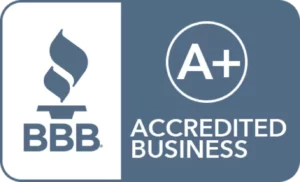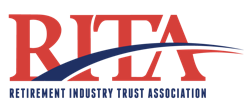
What is a Solo 401(k) Plan?
A Solo 401(k) plan is a type of retirement account for the Self-Employed.
The Solo 401(k)
The Solo 401(k) is a 401(k) qualified retirement plan that was designed for self-employed individuals and small business owners with no full-time employees, excluding a business partner and spouse. Much like the traditional 401(k), this unique plan encourages individuals to save for retirement in a tax-advantaged environment. When participants contribute funds into the Solo 401(k), taxes on the funds will be deferred until the participant takes a qualified distribution.
The Solo 401(k) is an IRS-approved plan that has the same rules and requirements as a traditional employer-sponsored 401(k). However, the Solo 401(k) allows participants to make annual contributions to the plan as both an employee and employer, which ultimately increases the yearly maximum contribution limit.
Also known as a self-employed 401(k) or individual 401(k), individuals can benefit even if they generate a portion of their total income through self-employment activities, such as a freelance gig.
Key Points
- The Solo 401(k) is the best retirement plan for the self-employed
- The Solo 401(k) is an IRS approved plan
- A Solo 401(k) plan allows you to save more for retirment and diversify your retirement funds.
Am I Eligible for a Solo 401(k)?
If you’re a business owner with no full-time employees, or you earn self-employment income, you can establish a Solo 401(k). It is perfect for independent contractors, such as consultants, home businesses, and real estate agents. If you qualify, your spouse can also contribute as long as he or she is an employee of the business.
As long as self-employment income exists, you can establish a Solo 401(k). If you have a side gig, you can establish a Solo 401(k), even if you have a full-time job. Use your plan as a vehicle to save more money, generate greater tax deductions, or simply as an investment vehicle for real estate or other investments.
The Solo 401(k) plan may be adopted by an individual sole proprietor, or any other business entity, such as an LLC, corporation, or partnership. In general, in order to be eligible to benefit from the Solo 401(k) plan, one must meet just two eligibility requirements:
- The presence of self-employment activity.
- The absence of full-time employees.
The following types of employees may be generally excluded from coverage:
- Employees under 21 years of age
- Employees who work less than 1,000 hours annually or two years of 500 hours or more
- Union employees
- Nonresident alien employees
What are the Benefits of a Solo 401(k) Plan?
The Solo 401(k) plan provides many benefits to individuals who are eligible for the plan, including the ability to make higher contributions. For example, the total annual contribution for a Solo 401(k) is $69,000 for participants who are under 50 in 2024. Participants who are age 50 and over can contribute up to $76,500 to the plan in 2024. This is because the Solo 401(k) has two types of contributions:
- Employee salary deferral contribution: Employees can contribute up to $23,000
- Employer profit-sharing contribution: Depending on the type of entity of your business, you may contribute either 20% or 25% of your income as the employer.
Catch-up contributions allow individuals aged 50 and older to contribute up to an additional $7,500 to the plan to reach the maximum limit of $76,500 when combining both contribution amounts.
Additional benefits of the Solo 401(k) plan include:
- $50,000 tax and penalty-free loan (or 50% of the account value, whichever is less) to be used for any purpose.
- Ability to make alternative investments, such as real estate, and traditional investments, such as stocks.
- There is no need to establish a Limited Liability Company (LLC) to make investments, which can be costly.
- Exemption from UBTI tax when using leverage for real estate investments.
- Stronger creditor protection than individual retirement accounts (IRAs).
- Not subject to ERISA rules, as the business of the Solo 401(k) holder does not have employees.
- Cost-effective and easy administration.
A major advantage of a self-directed retirement account, such as a Solo 401(k) retirement plan, is that you no longer have to make stock market investments. With this type of retirement account, you can make investments in real estate, investment funds, private businesses, cryptos, gold, and more. You can invest in assets you know and understand.

Solo 401(k) vs IRA
The Solo 401(k) is an IRS-approved retirement plan that was specifically designed for self-employed individuals and small business owners with no full-time employees other than themselves, a business partner, and perhaps their spouse. There are more advantages to establishing a Solo 401(k) over an IRA.
Other benefits of the Solo 401(k) vs a Traditional IRA include:
- Tax-Free Loan Option: Borrow up to $50,000 or 50% of your account value (whichever is less) to use for any purpose.
- Easy Administration: There is no annual tax filing or information returns for a plan that does not exceed $250,000 in assets.
- No need to establish an LLC: LLCs can be costly, especially depending on which state you live in. With a Solo 401(k), the trustee (you) can make investments without the need for an LLC.
- Strong Creditor Protection: Most states offer better creditor protection for this retirement plan than a Traditional IRA. Additionally, Individual 401(k) Plan assets are protected against creditor attack in a bankruptcy proceeding.
- Roth After-Tax Benefit: You have two formats with a Solo 401(k): pretax, or Roth (after-tax). With a Traditional IRA, you only have the option of pretax. With the Roth option, your money can grow in its retirement account tax-free. And of course, when you withdraw at retirement, you pay no additional taxes.
- Non-recourse Leverage Exception: You can invest in your own business and real estate investments without penalty. By using non-recourse funds, you won’t trigger the Unrelated Debt Financed Income Rules and the Unrelated Business Taxable Income (UBTI and UBIT). This exception doesn’t apply to IRAs.
Compare the Solo 401(k) to other individual retirement accounts:

Using a Solo 401(k) to Take out a Loan
A great advantage of the Solo 401(k) is that you can use it to take out a loan tax- and penalty-free. Under Internal Revenue Code Section 72(p), a Solo 401(k) plan participant can borrow up to 50% of the total 401(k) value or $50,000 (whichever is less). Participants can borrow this for any purpose, such as paying off debt or funding their business.
Repayment of the loan is based on a schedule provided when the loan is initiated. You must pay the loan back (including interest) over a term of up to five years. Participants must make loan payments at least quarterly and at a minimum interest rate of Prime.
Failure to make the loan payments may cause a loan default causing taxes and IRS penalties.
Learn More: The Solo 401(k) Loan Feature

Like the Self-Directed IRA, to initially fund the Solo 401(k) you may rollover funds from:
- Traditional IRAs
- SEP Plans
- Previous employer 401(k) plans
- Money Purchase plans
- Profit Sharing plans
- Keogh plans
- Defined Benefit plans
- 403(b) plans
- Rollover IRAs
You can roll over all these funds tax free. Accomplish this by setting up a trust account for the Solo 401(k). Then transfer the funds directly from the current Custodian to the trust bank account. You can open a trust account at any local bank or credit union. Only a Roth IRA cannot be rolled into a Solo 401(k).
Read More: Solo 401(k) Contribution vs. Rollover
Under the 2024 Solo 401(k) contribution rules, a plan participant under the age of 50 can make a maximum annual employee deferral contribution in the amount of $23,000 ($22,500 for 2023). That amount can be made in pretax, after-tax or Roth. On the profit-sharing side, the business can make a 25% (20% in the case of a sole proprietorship or single member LLC) annual profit-sharing contribution based on the amount of the net Schedule C amount or W-2, as applicable, up to a combined maximum, including the employee deferral, of $69,000 for 2024 ($66,000 for 2023).
For plan participants over the age of 50, an individual can make a maximum annual employee deferral contribution in the amount of $30,500 ($30,000 for 2023). That amount can be made in pretax, after-tax, or Roth. On the profit-sharing side, the business can make a 25% (20% in the case of a sole proprietorship or single member LLC) annual profit-sharing contribution based on the amount of the net Schedule C amount or W-2, as applicable, up to a combined maximum, including the employee deferral, of $76,500 ($73,500 in 2023).
A plan participant’s ability to make employee deferral contributions is based on the amount of compensation the individual earns from the business. Employee deferrals are not a percentage of income but a dollar-for-dollar calculation based on the net Schedule C or W-2 amount. For example, a plan participant that earned $12,000, would not be able to make employee deferrals in an amount greater than the amount earned. Whereas an employee that earned $60,000 would be able to max out their employee contribution.
Roth Employee Deferral Contributions
Not all Solo 401(k) plans allow for employee deferrals to be made in pretax or Roth. However, the majority of Self-Directed Solo 401(k) plans include a Roth option for employee deferral contributions. Pretax employee deferral contributions are tax deductible and reduce one’s taxable income. Whereas Roth deferrals are after-tax and do not generate a tax deduction. However, the advantage of having Roth 401(k) funds is that once the plan participant is over the age of 59 1/2 and the Roth has been opened at least five years, all distributions are tax free. Pretax contributions are subject to ordinary income tax.
One of the many benefits of using a Solo 401(k) is that you grow your retirement account by diversifying your investments. The Solo 401(k) retirement plan investments are similar to investments you can make with a self-directed IRA. Step away from traditional investments and spend your money on new opportunities. This can include real estate, tax liens, raw land, rentals, foreclosures, etc. This is possible if you choose a Self-Directed Solo 401(k) Plan.
All income and gains on these investments go back to your Individual 401(k) Plan tax-free. As a trustee, you have full control to make any investment you want without the custodian’s consent.
Are contribution options flexible? Absolutely. You can make contributions for any purpose. You also have the option to invest as much as legally possible, reduce, or suspend investments. You can make contributions but there’s no requirement to do so.
Conclusion
The Solo 401(k) strategy is a great way to maximize one’s contributions and gain investment control. Not all Solo 401(k) plans include a Roth option. For example, a Solo 401(k) plan offered by a brokerage firm will typically not include the option. IRA Financial is one of the few Solo 401(k) plan providers that allows for this amazing tax planning tool.
Below is a summary of how the Solo 401(k) plan works:
-
Establish a Solo 401(k) plan.
Must be self-employed or have a small business with no full-time employees. Also, must confirm that the plan allows for after-tax contributions.
-
Make contributions.
To the Solo 401(k) plan up to $69,000 ($76,500 if at least age 50) in 2024. Contributions can be made dollar-for dollar. Just make sure you have sufficient earned income (Schedule C or W-2). Passive income, such as rental income, capital gains, interest is not eligible for plan contributions.
-
Begin Investing
WIth IRA Financial's Solo 401(k) plan, investing is as easy as writing a check!
The Solo 401(k) is not widely known but should be. It can help individuals supercharge their retirement accounts and at the same time provide greater investment and distribution options.
To learn more, please contact a Solo 401(k) plan specialist at 800-472-0646.




